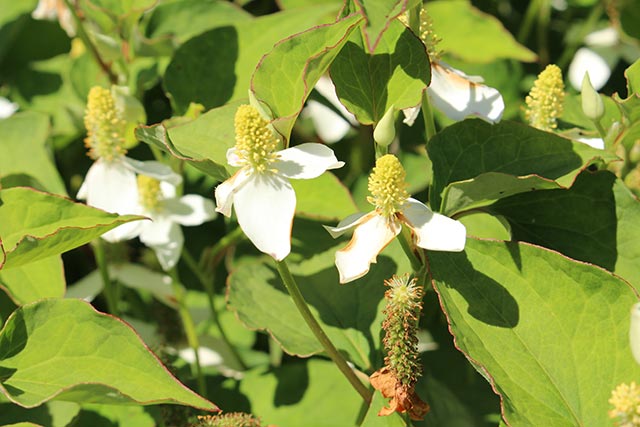
The gastroprotective effects of a phytonutrient found in chameleon plant
For their study, the researchers obtained a polysaccharide -- a carbohydrate composed of many sugar molecules -- from H. cordata (HCP) and tested its effects on mice infected with the H1N1 virus. This virus is a subtype of influenza A, the most common type of influenza virus that infects humans. Also known as the cause of swine flu, H1N1 normally infects pigs, but humans who get in contact with those animals can also get the infection.
H1N1 infection is known to cause pulmonary and intestinal injury, as well as an imbalance in gut microbiota composition. The researchers treated these problems in their mouse model with oral administration of HCP at a dosage of 40 milligrams per kilogram body weight per day. They found that HCP treatment restored the level of zonula occludens-1 in the intestines of the infected mice. Zonula occludens-1 is a tight junction protein that's part of a highly organized complex responsible for gut barrier function.
The researchers also reported that HCP reversed the imbalance in the mice's gut microbiota composition by reducing the number of pathogenic bacteria that belong to the Vibrio and Bacillus genera. This restored intestinal homeostasis in the mice to some degree. (Related: Herbal remedy that was effective against SARS found to be beneficial for acute lung injury.)
HCP treatment also inhibited inflammation and increased the production of interleukin-10 (IL-10) -- an anti-inflammatory signaling molecule (cytokine) -- by reducing intestinal levels of Toll-like receptors interleukin-1B. Toll-like receptors are proteins involved in immune response, while interleukin-1B is a pro-inflammatory cytokine. HCP treatment also alleviated lung injury and intestinal dysfunction caused by H1N1 infection.
Based on these results, the researchers concluded that HCP can be used to prevent intestinal damage and gut microbiota imbalance caused by H1N1 viral infection.
The chameleon plant and its medicinal benefits
The chameleon plant is a herbaceous, flower- and fruit-bearing plant that can grow in various places, including trail sides, wet meadows and ravines, to name a few. One variety of it is used in house gardens as a ground cover owing to its perennial nature and its tri-colored (green, yellow and red) leaves, which earned it the name "chameleon." However, in other countries such as Vietnam and India, the leaves of the chameleon plant are eaten raw as a salad, added to cooked dishes or used as an herbal garnish.
In TCM, the chameleon plant is used to treat a variety of ailments, such as urinary tract infection (UTI), coughs, sores, colitis, carbuncles, dyspnea, lung abscess and dysentery. It is also combined with other herbs to address tobacco toxicity and to help individuals withdraw from tobacco addiction. According to Chinese medicinal records, the chameleon plant is also effective in clearing inflammatory and infectious conditions.
There are many health benefits associated with the chameleon plant. Research on its medicinal properties has confirmed the following:
- Anti-allergy effects (inhibits histamine production)
- Antioxidant properties (free radical scavenging)
- Promotes the growth of good gut bacteria
- Anti-diabetic properties
- Anti-obesity (induces weight loss)
- Anti-herpes activity
The chameleon plant is both a natural medicine and a functional food with plenty of health benefits. To learn more about it and other medicinal plants, visit PlantMedicine.news.
Sources include:
Please contact us for more information.























